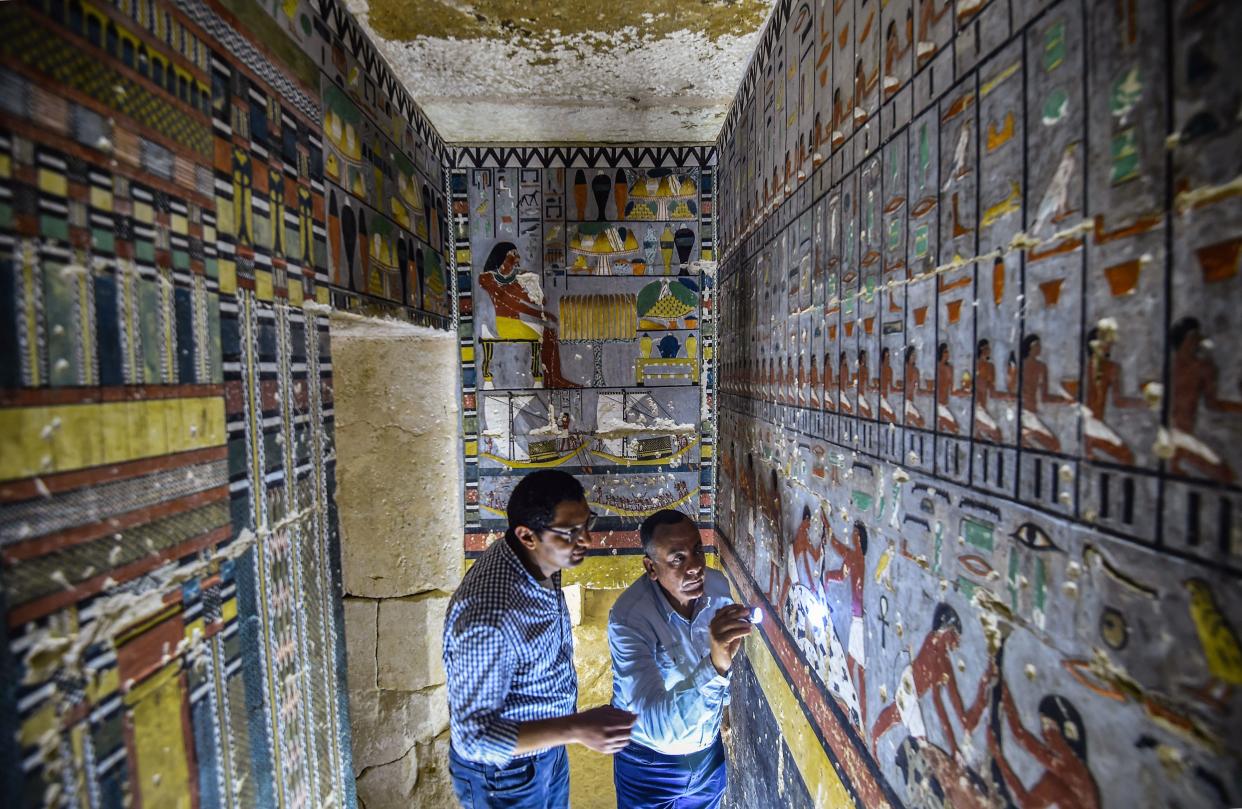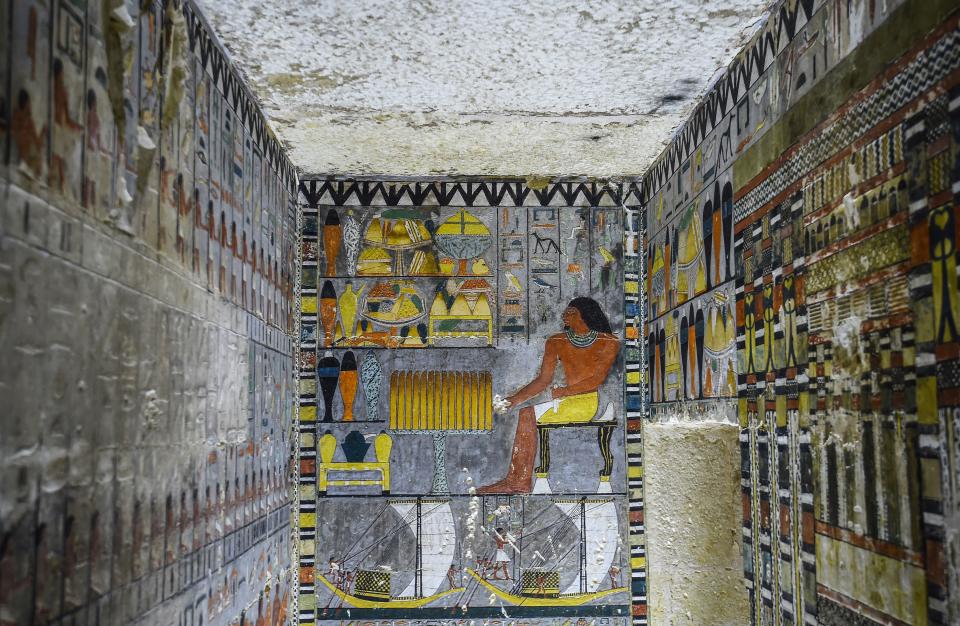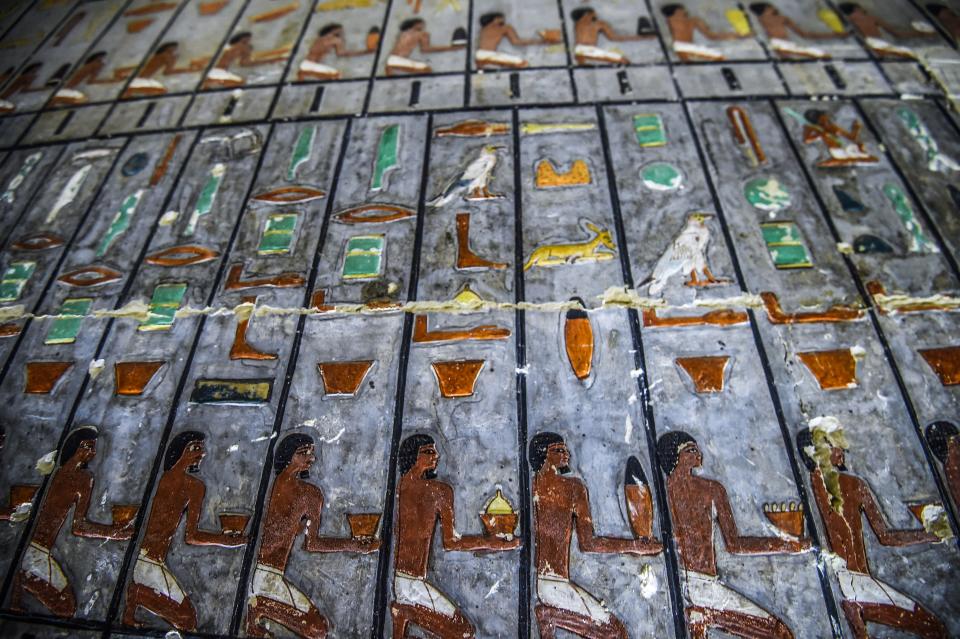Egyptian tomb dating back 4,300 years could reveal new details of mysterious Fifth Dynasty

A 4,300-year-old tomb belonging to a senior official in Egypt’s Fifth Dynasty has been unveiled around 20 miles south of Cairo.
The newly opened crypt, located near Saqqara, contains vivid coloured reliefs and well-preserved inscriptions painted in a special green resin that has kept its pigment over the last 4,300 years.
Built from white limestone bricks, it is thought to belong to a nobleman known as Khuwy or Khewi and was discovered last month.

In a statement Mohamed Megahed, head of the excavation team, said: “The L-shaped Khuwy tomb starts with a small corridor heading downwards into an antechamber and from there a larger chamber with painted reliefs depicting the tomb owner seated at an offering table.”
The north wall of the tomb indicates its design was inspired by the architectural blueprint of the royal pyramids from the Fifth Dynasty (2494-2345 BC), the statement added.
The team has unearthed a number of tombs thought to date from the same period.

Archaeologists recently found a granite column with an inscription dedicated to Queen Setibor, wife of the eighth and penultimate king of the dynasty.
Egypt has in recent years sought to promote archaeological discoveries across the country in a bid to revive tourism that took a hit from the turmoil that followed its 2011 uprising.

 Yahoo News
Yahoo News 

